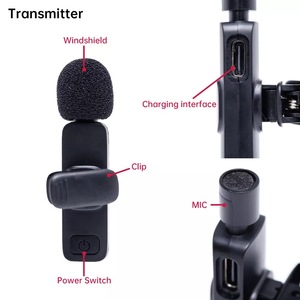Introduction to Music Studio Mics
Music studio mics are essential tools for capturing high-quality audio in both professional and home recording environments. These microphones are designed to pick up sound with precision, making them ideal for vocalists, musicians, and podcasters alike. Whether it's for recording an album, producing a podcast, or capturing audio in a video, the right music studio mic can significantly enhance the overall quality of the final product. With a variety of types available on the market, understanding their unique features will help you make informed decisions for your audio recording needs.
Types of Music Studio Mics
When selecting a music studio mic, it's crucial to consider the different types available, as each offers unique advantages tailored to specific recording scenarios:
- Condenser Microphones: These are popular for studio recordings due to their sensitivity and wide frequency response. They excel at capturing subtle nuances in vocals and acoustic instruments.
- Dynamite Microphones: Known for their durability and resistance to feedback, dynamic mics are great for live performances but also serve well in studio settings for instruments like drums and guitar amps.
- Ribbon Microphones: Offering a warm and natural sound, ribbon mics are perfect for recording vocals and strings. They are more fragile than other types, requiring careful handling.
- Lavalier Microphones: These lapel mics are ideal for interviews and broadcasting, providing hands-free operation while capturing high-quality sound.
Function and Features of Music Studio Mics
Music studio mics come loaded with features designed to enhance the recording experience. Knowing these functions is vital for choosing the right microphone for your needs:
- Frequency Response: A broad frequency range ensures that the mic accurately captures low and high frequencies, resulting in a fuller sound.
- Polar Pattern: This refers to the microphone's sensitivity to sound from different directions. Common patterns include cardioid, omnidirectional, and figure-8, each suited for specific recording applications.
- Self-Noise Level: A lower self-noise level indicates a quieter microphone, which is particularly beneficial for studio recordings where capturing subtle sounds is essential.
- Durability: Quality construction materials and design elements, such as shock mounts, enhance the durability of the mic while reducing unwanted vibrations and handling noise.
Applications of Music Studio Mics
The versatility of music studio mics makes them suitable for a wide array of recording applications:
- Vocal Recording: Both condenser and dynamic mics are commonly used to capture vocals, adding clarity and warmth to recordings.
- Instrument Tracking: Mics tailored for instruments can capture the rich tones of acoustic guitars, pianos, and percussion.
- Field Recording: Portable mics can be essential for recording live performances or capturing ambient sounds in various environments.
- Podcasting and Broadcasting: Using high-quality mics ensures that spoken words are crystal clear, providing an enjoyable listening experience for audiences.






















































